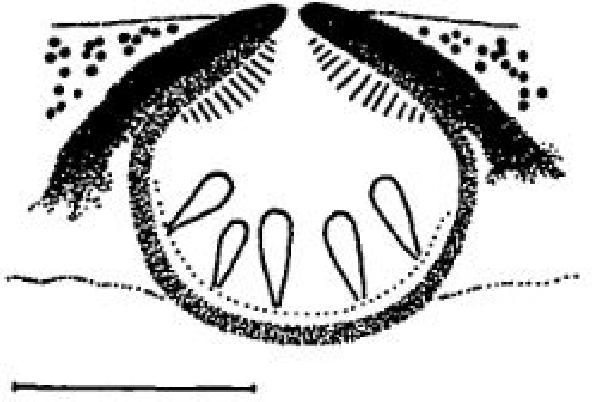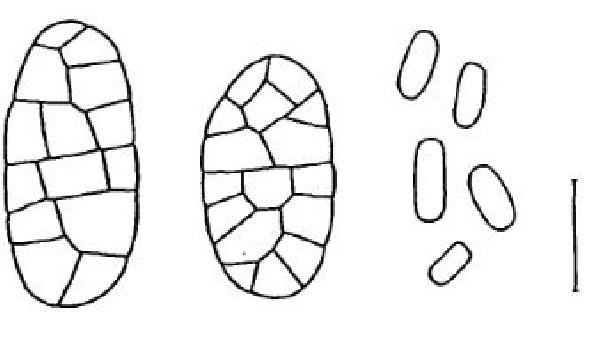Staurothele epigaea Breuss & Etayo
Linzer biol. Beitr., 27, 2: 665, 1995.
Synonyms:
Distribution:
Description: Thallus crustose, thin, rimose-areolate, brown. Upper cortex indistinctly delimited; algal layer continuous. Perithecia black, subglobose, up to 0.3 mm in diam., fully immersed in the thallus, the ostiolar region visible as a black dot. Involucrellum well-developed, dimidiate, slightly spreading in lower part; exciple pale to medium brown throughout; hymenial algae oblong to bacilliform, 4-8 x (2.5-)3-3.5(-4) µm; periphysoids 30-35 µm long, septate, rarely branched; interascal filaments absent, the hymenial gel hemiamyloid. Asci (6-)8-spored, clavate, the wall thickened above, with an ocular chamber, after dehiscence with a delicate extruded endotunica, I-, K/I-. Ascospores muriform, yellowish brown, ellipsoid, 22-30 x 12-15 µm. Photobiont chlorococcoid (Stichococcus-like), present in both thallus and hymenium. Spot tests: K-, C-, KC-, P-, UV-. Chemistry: without lichen substances.Note: a terricolous species, hitherto known only from Spain (/Navarra), growing on clayey soil in dry situations (Breuss & Etayo 1995). To be looked for in Italy.
Growth form: Crustose
Substrata: soil, terricolous mosses, and plant debris
Photobiont: green algae other than Trentepohlia
Reproductive strategy: mainly sexual

Predictive model
Growth form: Crustose
Substrata: soil, terricolous mosses, and plant debris
Photobiont: green algae other than Trentepohlia
Reproductive strategy: mainly sexual

Predictive model



